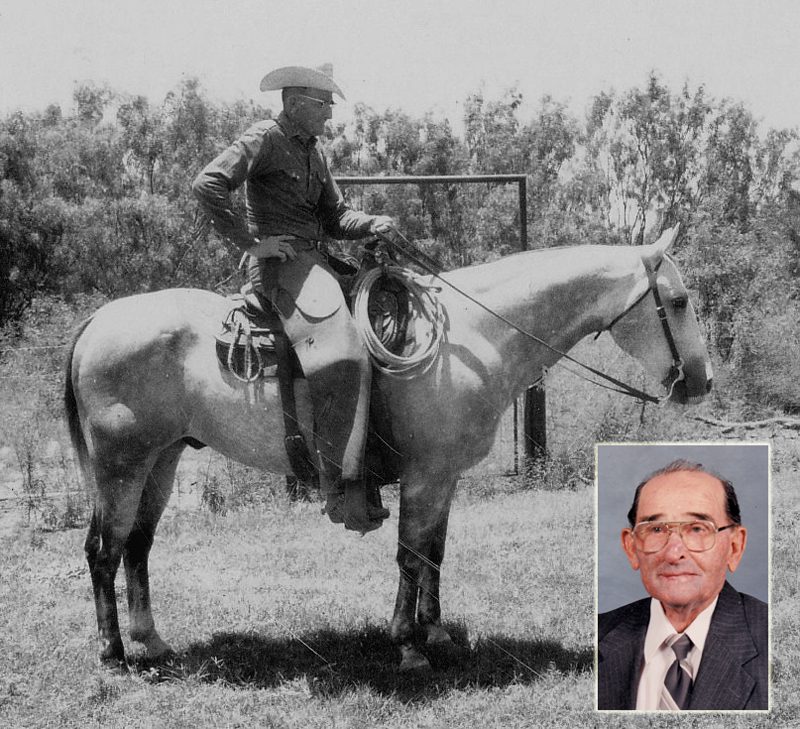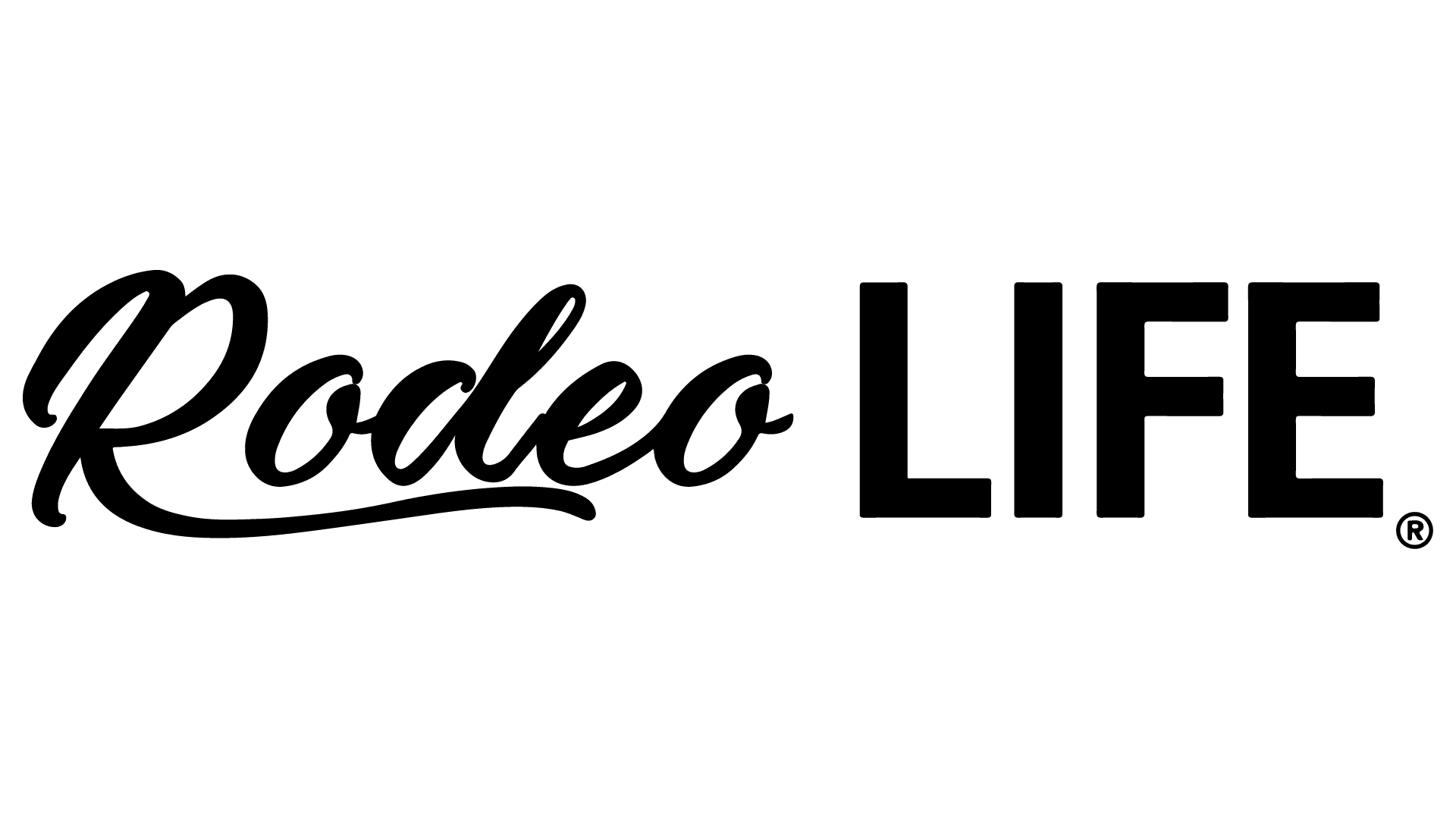
Jack Kingsbery was a founder of the NIRA, a cowboy, rancher, inventor, businessman, WWII veteran, and a great storyteller. Here is an excerpt from his book Cowboy Wrecks & Rattlesnakes.
The World’s Slowest Horse Race
During the 1950s I was ranching near Batesville. One of my neighbors was Ed Cassin, whose family was among the first to ranch in that area. Ed was a top brush cowhand and one of the fastest men I have ridden with while roping wild cattle in the thick brush. His favorite brush horse was named Sundown and when Ed was riding Sundown very few cowboys could keep up with him in pursuit of a wild steer.
One hot day I was helping Ed round up cattle on his home ranch with about six or seven other cowboys. Ed told us. “I’ve got a big, long-legged ‘Bramer’ bull in this pasture that I sure want to get penned so I can take him to the auction. He’s spoiled about penning and will try to jump out if we do get him in the corral.”
I told Ed, “I wish I had known we were going to have to rope something in the brush because I would have ridden a faster horse. This one’s a good cow horse but isn’t very fast.” My horse should have been fast because his dam was a stakes-winning Thoroughbred mare and his sire was a son of Mr. Underwood’s good Quarter Horse, Dexter. But he was so slow I named him Possum.
That day Ed was riding a heavy-set gray horse that had a little Percheron blood in his pedigree. He was a good cow horse and could pull anything from the saddle horn. Because he was so stout, Ed had named him Encino, which means “oak” in Spanish. Encino wasn’t a fast horse and Ed regretted he was not riding Sundown because he would have better chance of catching the bull if it took off running though the brush.
We rounded up the cattle in the pasture, including the wild Brahman bull, and started them toward the corral. Just as we got close to the corral the bull broke out of the herd like he was shot out of a cannon. Ed and I took off after him, tearing through the heavy brush as fast as our horses could go. The bull was fast and we at full throttle for half a mile before he started to tire and we began to close the gap. We were within twenty yards of the bull when he came to a barbed wire fence and jumped it without slowing down. There weren’t any gates close by so Ed and I gave up the chase and headed back to the corral.
As we rode back together I began complaining about how slow my horse Possum was. Ed was upset that we didn’t rope the bull and started griping about Encino being too slow to catch fast cattle. We began arguing about which of us had the slower horse, each insisting that our horse was slower than the other. By the time we got back to the corral we decided the only way to settle the issue was to match the horses in a race. The horse that lost was the slowest and therefore the winner.
Since we had to finish our cow work that day we agreed to race the next Saturday, running 200 yards on a dirt road in front of the Cassin Ranch headquarters. We bet a steak dinner on the outcome. By Saturday work of the horse race had spread through the little town of Batesville. A good many people from the area showed up to watch the “slowest horse” race. Quite a bit of money was wagered on which one of us had the slowest horse.
At race time we appointed someone to be the starter and two others to stand at each side of the road at the end to judge the finish. As we rode up to the starting line I told Ed that since this was a race to prove which of us had the slower horse we would have to ride each other’s horse. That way neither of us could be accused of “pulling” our horse to lose the race on purpose. Ed agreed, so we switched mounts and approached the starting line. The starter dropped his arm and the race was on.
We got off to a good start and I was really pouring the quirt to Encino, just as Ed was dong to Possum. The horses ran just about even for the first hundred yards and then Encino gradually pulled ahead of Possum and won the race by half a length. I won the race and a steak dinner by proving my horse was slower than Ed’s horse. I don’t know if Ed ever caught that bull.
Jack Kingsbury, a Tribute:
By Sharon Adams
F.C. “Jack” Kingsbery passed away February 25, 2016, in Kerrville, Texas. He was born May 26, 1922, in Santa Anna, Texas, to Howard Thomas and Mabel Woodward Kingsbery. He grew up on the Kingsbery family ranch in Coleman County. The Kingsbery family moved to Bryan, Texas where Howard served as head of the Texas Agricultural Adjustment Act (AAA).
After graduating from Stephen F. Austin High School in Bryan, Texas, Jack entered Texas A&M in fall 1941 as a member of the class of ’45. In September 1943, as World War II dragged on, the entire A&M junior class marched to the local recruiting office and volunteered for service. Jack entered the Army Air Corps and trained as a B-24 bomber mechanic. He served in the 2nd Air Division, 8th Air Force, 458th bomb group, at Horsham St. Faith Air Base, Norwich, Norfolk, England. He was crew chief of the maintenance crew responsible for the B-24 bomber “The Shack.”
Jack was discharged in October 1945, and frequently described how good it was to see the Santa Anna Mountains from the bus coming home from Wichita Falls. While working on the Kingsbery family ranch he sustained a severely broken leg when a young horse fell with him. A norther blew in that morning, and it was many hours before he was found by a neighbor, so he contracted pneumonia as well. The incident delayed his return to Texas A&M until fall 1946.
At Texas A&M he changed his major from mechanical engineering to animal husbandry. Jack and his friends travelled all over Texas competing in rodeos to supplement their GI Bill benefits. He was an enthusiastic calf roper and team roper. He was president of A&M’s Saddle and Sirloin Club, and a charter member of the National Intercollegiate Rodeo Association. In later years he and wife Evelyn became charter members of the NIRA Alumni Association and helped raise funds for rodeo scholarships. While attending A&M Jack designed a rodeo arena for Texas A&M and raised funds to build it.
After graduating from A&M, Jack bought cattle and began ranching and cowboying in South Texas. He rounded up “mossyback” wild cattle out of the brush country for ranchers who hadn’t been able to get help during the war years. He married schoolteacher and ranch woman Evelyn Bruce, also from Santa Anna, on June 30, 1951. They ranched in Zavala County near Batesville and Crystal City, raising crossbred cattle and Quarter Horses. The drought of the 1950’s devastated the cattle business, and they had to move their cattle several times as stock tanks and wells dried up. The grass eventually gave out so he spent two scorching South Texas summers burning spines off prickly pear cactus to keep their cattle alive.
Jack added thoroughbreds to his Quarter Horse business, standing Native Native, a son of the famous Native Dancer, at stud at their farm near Crystal City. Jack acquired a Crystal City company and founded Kingsbery Manufacturing Company in 1963, making livestock squeeze chutes. He designed and built other ranch equipment, such as calf cradles, revolving saddle display racks, and steel gun safes. Jack was member and president of the Zavala County Agricultural Exposition, and was proud of having weighed all the 4-H and FFA show livestock for 50 years. He was member and president of the Zavala-Dimmit County Water Board for many years.
Jack and Evelyn began raising registered Beefmaster cattle, and he was elected to the board of Beefmaster Breeders Universal, helping promote and improve the breed. Jack was elected to the board of the borrower-owned Federal Land Bank (now Capital Farm Credit Association) and served several terms.
He was a member of First Baptist Church of Crystal City and the Lions Club.
Jack wrote two best-selling books about his experiences in the cattle business: “Cowboy Wrecks & Rattlesnakes” and “Yes, I’m Still Alive.”
Jack is survived by his wife of 64 years, Evelyn Bruce Kingsbery; four children: Ann and Mike Hilliard of Show Low, Arizona; Bob and Kerri Kingsbery of Frisco, Kay Bell of Kerrville; and Bruce and Karyn Kingsbery of Uvalde; seven grandchildren, and nine great-grandchildren. He is also survived by his sister-in-law, Margaret Bruce Robin of Houston; first cousins Kay Gray and husband Frank, of Santa Anna, Texas; Janet Holland and husband Mike, of Mineral Wells, Texas, Claride Mayo, of Alexandria, Virginia, Dr. John R. Woodward and wife, Dorothy, of Dallas, Texas; and numerous nieces, nephews, cousins, and their children. A Kingsbery/ Bruce/Woodward family tradition of Thanksgiving gatherings started at the Kingsbery place in Crystal City in 1975 and is now maintained by the third generation with recent gatherings in College Station and Kerrville.
Services were held Saturday, March 5, 2016, at 2:00 at the Santa Anna Cemetery.
Memorials: Santa Anna Cemetery Association, P.O Box 14, Santa Anna, TX 76878; National Intercollegiate Rodeo Association Alumni Scholarship Fund, 414 Buist Avenue, Phoenix, AZ 85041: Alamo Hospice, 1400 Water Street, Kerrville, TX, 78028; or a charity of your choice.








